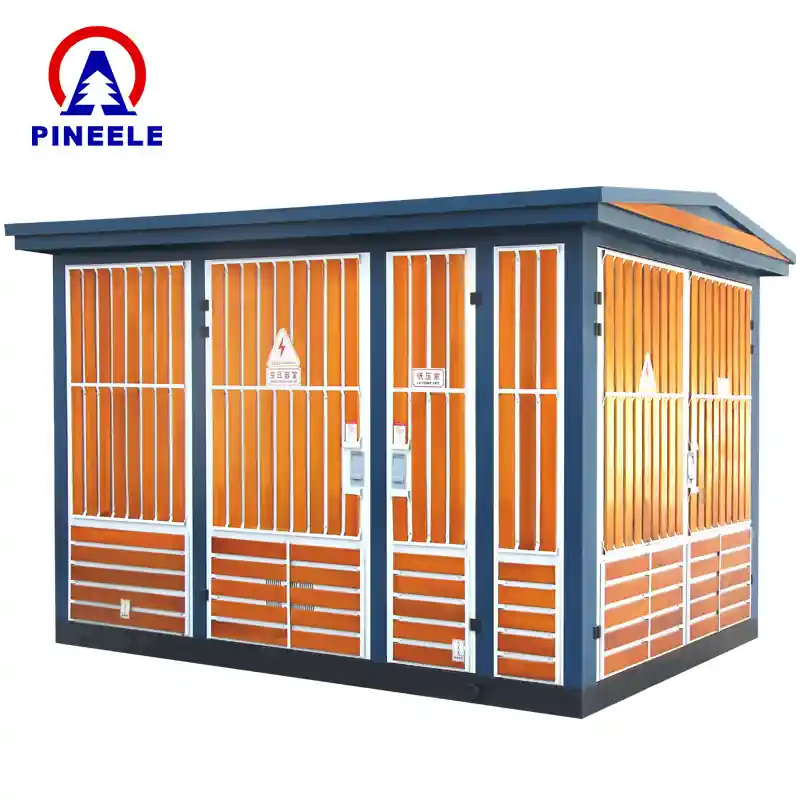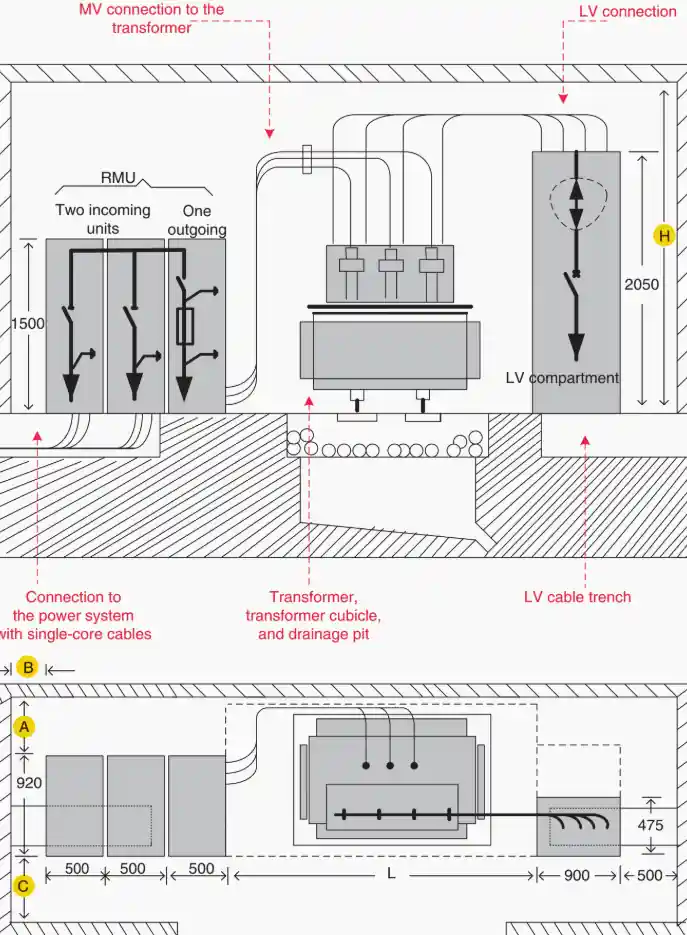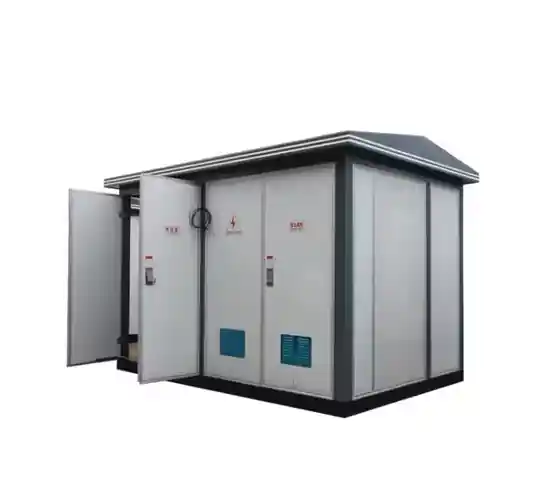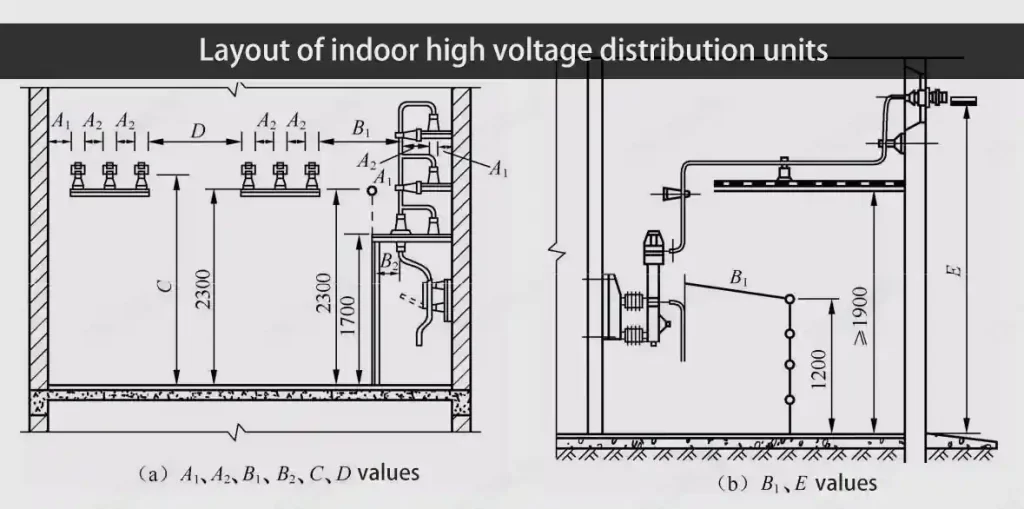- Introduction
- What Is a 500 kVA Compact Substation?
- Applications of 500 kVA Compact Substations
- Market Trends and Industry Demand
- Technical Specifications
- Comparison with Other Compact Substation Ratings
- Key Advantages
- Selection Tips for Buyers and Engineers
- Application Environment
- Transformer Type
- Switching Method
- Compliance and Testing
- Frequently Asked Questions (FAQ)

Introduction
In modern power distribution systems, efficiency, reliability, and space optimization are top priorities. The 500 kVA Compact Substation is specifically designed to address these needs—delivering a safe, integrated, and space-saving solution for transforming medium-voltage power to low-voltage output across commercial, industrial, and urban environments.
This article provides a complete overview of the 500 kVA compact substation, including its core functionality, use cases, technical specifications, industry trends, and expert insights for selection and deployment.
What Is a 500 kVA Compact Substation?
A compact substation, sometimes referred to as a unit substation or package substation, is a prefabricated, enclosed electrical unit that combines three key components:
- Medium voltage (MV) switchgear
- Distribution transformer
- Low voltage (LV) switchboard
The 500 kVA rating signifies that the transformer inside the substation is capable of supplying up to 500 kilovolt-amperes of electrical power, which makes it ideal for medium-scale loads such as commercial complexes, small industrial facilities, and residential developments.

Applications of 500 kVA Compact Substations
This type of substation is particularly valued for its plug-and-play modular design and minimal civil works requirement. It’s widely deployed in:
- Residential and commercial buildings
- Light industrial zones
- Logistics centers and data hubs
- Hospitals, schools, and shopping malls
- Renewable energy integration (e.g., solar or wind farms)
Its compact design allows for fast installation in tight spaces, while the sealed enclosure ensures reliable operation even in outdoor or semi-industrial conditions.

Market Trends and Industry Demand
According to a 2024 report by Markets and Markets, the compact substation market is projected to grow at a CAGR of 6.2%, driven by increased urbanization and smart grid deployments. Specifically, the 500 kVA capacity range is among the most popular due to its compatibility with mid-sized infrastructure projects.
Leading manufacturers such as ABB, Schneider Electric, Siemens, and PINEELE provide standardized and customizable 500 kVA compact substations. Compliance with IEC 62271-202, IEC 60076, and IEEE C37 standards ensures global safety and performance expectations are met.
Reference: IEEE Standards Collection, Wikipedia: Substation, Schneider Electric: MV/LV Distribution Whitepapers
Technical Specifications
Here is a general specification table for a 500 kVA compact substation:
| Specification | Typical Value |
|---|---|
| Transformer Rating | 500 kVA |
| Primary Voltage (MV) | 11kV / 20kV / 33kV |
| Secondary Voltage (LV) | 400V / 415V / 690V |
| Cooling Method | ONAN (Oil Natural Air Natural) |
| Transformer Type | Oil-immersed or Dry-type (optional) |
| Frequency | 50Hz / 60Hz |
| Protection Degree | IP33 / IP44 / IP54 |
| Standards | IEC 62271-202, IEC 60076, ANSI C57.12, IEEE C37 |
| Enclosure Material | Galvanized steel or concrete |
| Cable Entry | Bottom or side cable entry |

Comparison with Other Compact Substation Ratings
Understanding the relative size and capabilities of a 500 kVA substation can help determine whether it’s the right fit for your project.
| Capacity | Application Scale | Typical Use Case |
|---|---|---|
| 250 kVA | Small commercial / rural loads | Villas, telecom stations |
| 500 kVA | Medium-scale facilities | Retail parks, factories, medium communities |
| 1000 kVA | Large industrial or urban zones | Warehouses, hospitals, high-rise buildings |
The 500 kVA substation strikes a balance between compact size and robust output, making it a versatile choice in both developed and developing infrastructure projects.
Key Advantages
Choosing a 500 kVA compact substation offers the following benefits:
- Space Efficiency: Minimal land use compared to traditional substations
- Cost-Effective Deployment: Reduced civil works and installation time
- Integrated Protection: MV and LV protection equipment enclosed in one unit
- Fast Commissioning: Prefabricated design simplifies installation logistics
- Scalability: Easily upgradable with modular components
Selection Tips for Buyers and Engineers
If you’re evaluating a 500 kVA compact substation for your next project, consider these critical selection factors:
Application Environment
- For outdoor use, ensure IP44+ protection and UV-resistant enclosure.
- For coastal or corrosive environments, opt for anti-corrosion coating or stainless steel enclosures.
Transformer Type
- Oil-immersed: Better for outdoor and high-load capacity needs.
- Dry-type: Preferable for indoor installations or eco-sensitive zones.
Switching Method
- Choose load break switches for basic grid feed or vacuum circuit breakers for enhanced protection.
Compliance and Testing
- Verify routine testing reports and IEC/IEEE standard certifications from the manufacturer.
Frequently Asked Questions (FAQ)
Typically, a 500 kVA compact substation requires 5–8 square meters, depending on the enclosure material and configuration. It can be installed on a simple concrete pad with basic ventilation.
Yes. 500 kVA substations are commonly used to step down voltage from inverter outputs to local grid levels in renewable energy applications.
With proper maintenance, a 500 kVA unit can operate reliably for 25–30 years, especially if installed in stable temperature and moisture-controlled environments.
The 500 kVA Compact Substation offers a reliable, compact, and scalable solution for mid-sized power distribution projects. Whether for commercial, industrial, or utility applications, this unit delivers consistent performance while minimizing installation and operational overhead.
By selecting a model built to international standards and supported by a trusted manufacturer like PINEELE, you ensure your energy infrastructure is built on a foundation of safety, reliability, and long-term value.

